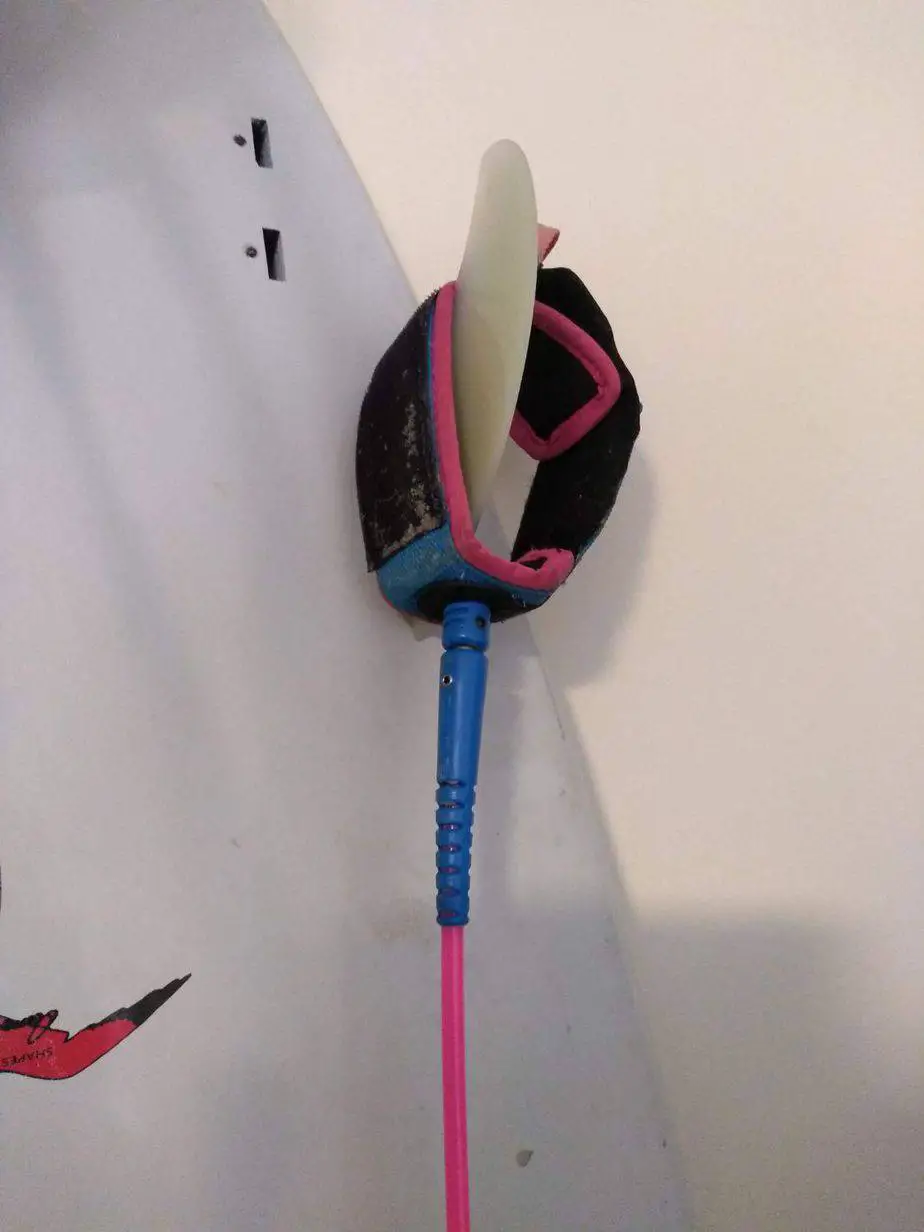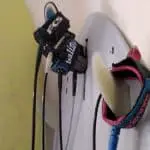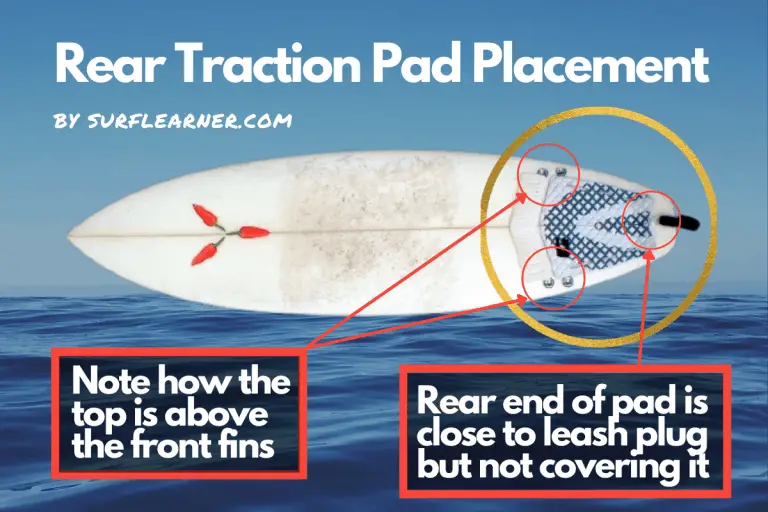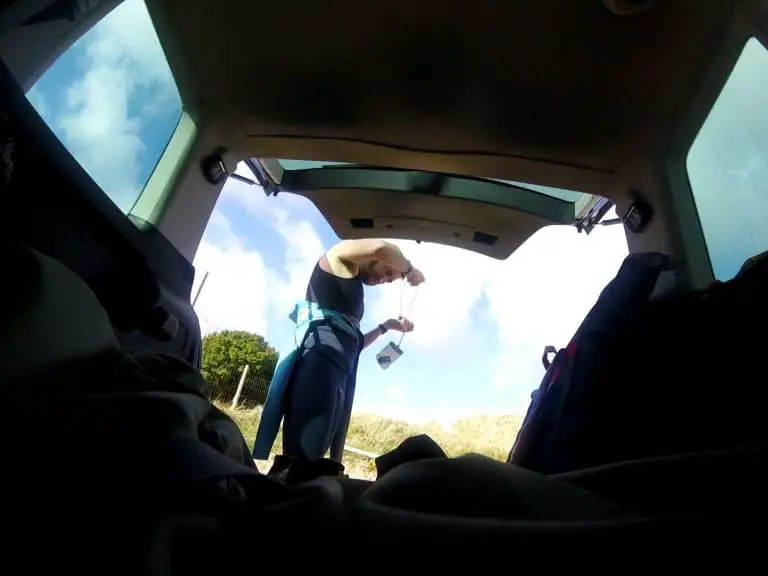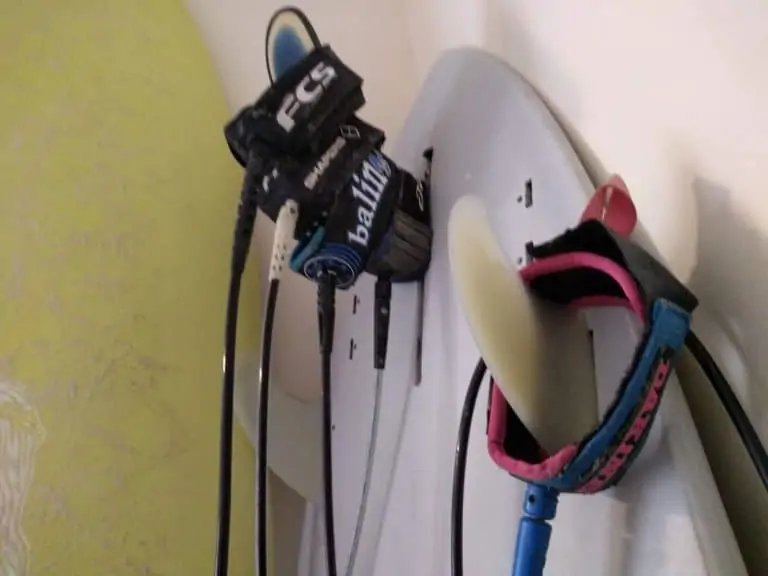How to Use a Surfboard Leash – Full Guide
A surfboard leash is an essential part of safety equipment and just the general accessory that you need at all times when you go out surfing, especially when you’re learning.
As you know, a surfboard leash keeps you connected to your surfboard at all times so you don’t have to swim in and there’s much lower risk of you losing your board and then struggling in the sea.
However, a lot of people have many questions about surfboard leashes before they learn to surf. So let’s address them in this post in detail, and to give you the best idea of using leash.
To start off, how do you use a surfboard board leash? Use the Velcro part of the leash and wrap it around your ankle with the cord pointing out at about the five o’clock position on the clock face, with your toes pointing at the twelve o’clock.
Make sure this is securely fastened to your board at the other end and you can paddle out into the surf.
That’s the brief version, but let’s have a look below at the detailed answer with more questions and answers as well on everything you need to know about surfboard leashes.
Let’s get right into it.
What Size Surfboard Leash Do I Need?
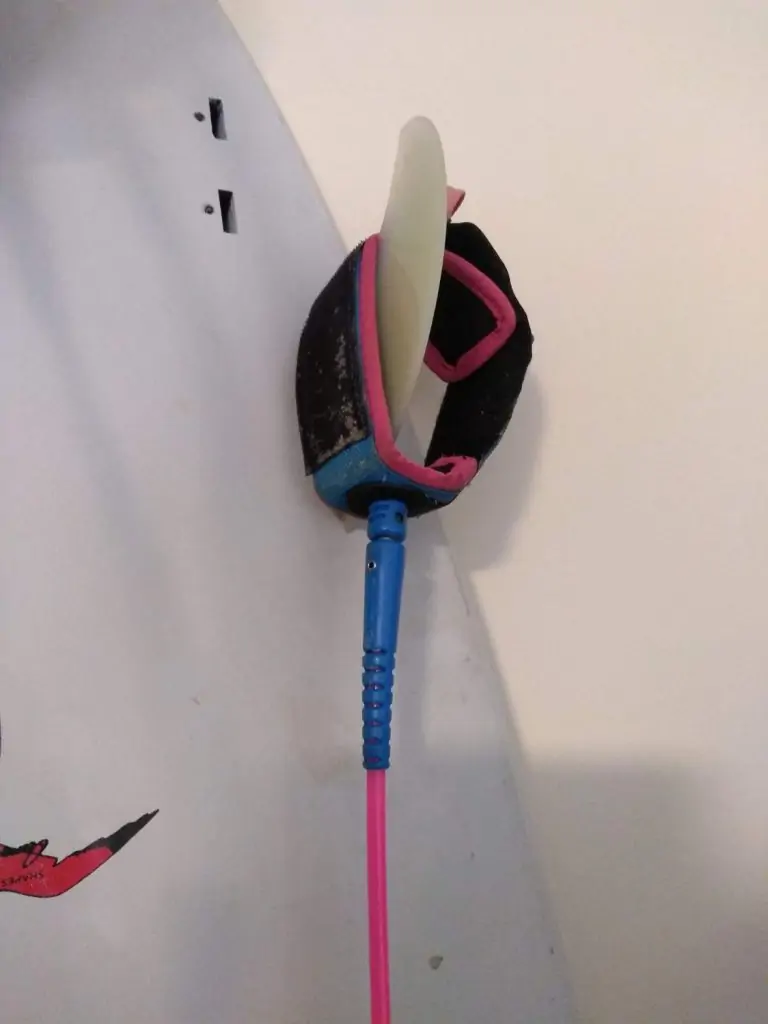
Get a surfboard leash that matches the length of your board. If your board is in the middle of feet, like an eight foot six board, then go longer and get a nine foot leash.
But it should be anywhere from the same length to one foot longer for the ideal surfboard leash. This is because of safety and also to do with the size of the board.
- If you go too short, the board might twang back and hit you when you fall off quite severely.
- If you go too long, then it can just end up putting too much tension on the leash and break more quickly as well.
Are Surfboard Leashes Safe?
Surfboard leashes are a safety mechanism, but they are not guaranteed to save you.
You still need common sense, but generally a new surfboard leash will be a huge advantage and safety bonus for you whenever you’re out in the surf. There are a few things you need to look out for however.
For instance, don’t use a surfboard leash that is coiled or is wrapped around you. There have been instances where surfboard leashes get wrapped around people’s necks and can be very dangerous, but this is in extreme cases where people do not pay attention.
Just make sure your surfboard leash is straight and not twisted before you put it on and you should have no problem.
How To Straighten A Surfboard Leash?
If your surfboard leash has got kinked, you can put it in warm water overnight and tie it to two ends to keep it tight.
But the best cure is prevention. Don’t leave your surfboard leash twisted around your board when you’re out of the surf, as this will cause it to coil and bend and kink.
Instead, hang it up loosely in a straight line, maybe on the fins of your board with the fins up in the air and the leash coming up from the tail, try to prevent it getting kinked at all times, don’t tie it tightly around your board when not in use, and you will not have this problem in future.
Note that if you do straighten your surfboard leash in warm water, this may weaken it.
A better option might simply be to run your hand along the leash from the bottom, making sure there are no twists in it even which are invisible to the naked eye, and then just hang it up on the fins as mentioned above, but without there being any twists.
The kinks could come out over time but if this doesn’t work after a few weeks, then try the warm water, but don’t go too hot because if it’s anything more than lukewarm you risk melting and permanently weakening the leash.
So it will not be safe to use. In short, don’t let it get kinked or coiled in the first place and you won’t have to worry about straightening it.
How To Attach A Surfboard Leash?
Wrap the Velcro around your foot when the leash is already wet, make sure the cord comes off your ankle at the five o’clock position if it’s on your right foot, or at about the seven o’clock position on your left foot.
This is with the clock face being where your toes point to the twelve o’clock position. If you do this, then it will not stick in between your feet and trip you up when you are trying to get up on your surfboard.
I always wet my leash before putting it on because this actually expands the fabric and makes it looser.
If you put it on dry and then get it wet, it will loosen a little bit and start to roll around on your ankle and cause you to trip over it.
You can also put your surfboard leash under your wetsuit, the leg of your wetsuit to help keep it in place.
But this does let in a bit more water and it’s a bit cooler as I was reminded of this morning when I went surfing and did this very thing in these chilly, winter waters.
How To Attach A Surfboard Leash To Your Board?
Your leash should come with a cord or string, double that over into a knot and put it through the leash plug on the deck of your surfboard.
Make sure that it goes through in a way that is double looped and you cannot pull it out. If the knot is too small, it could pop out and your leash will come undone.
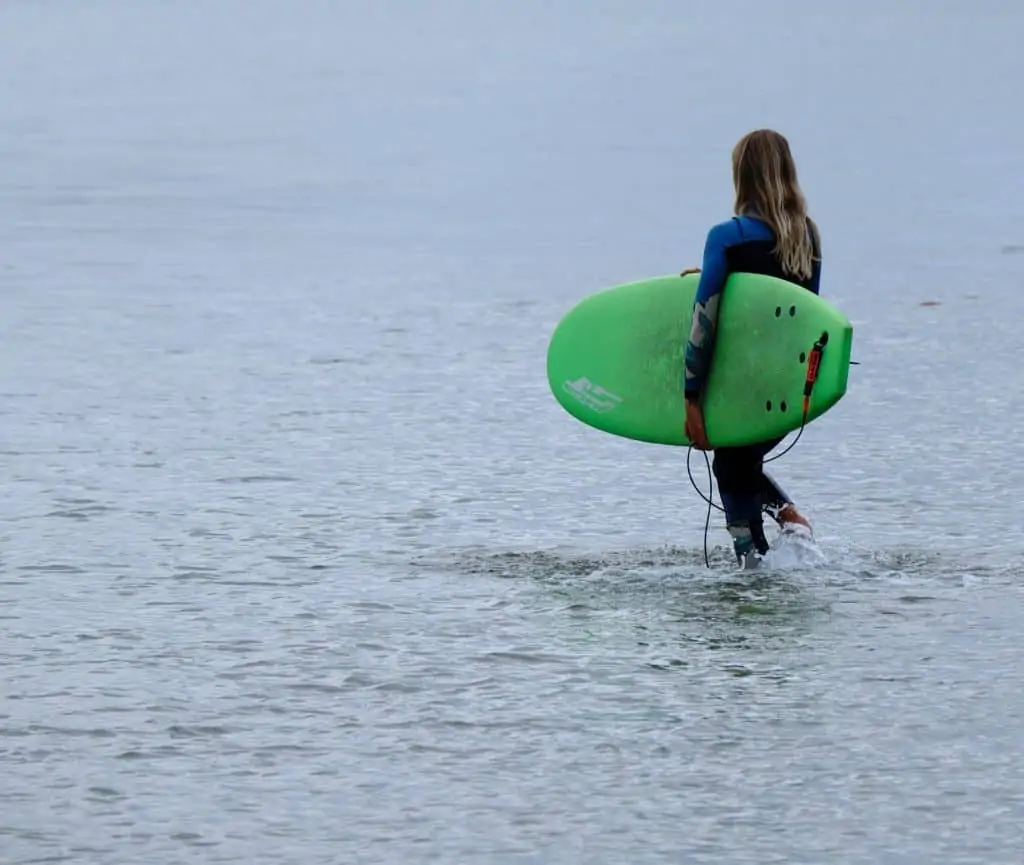
Photo Credit : Miguel a Amutio on Unsplash
From there, put the small end of your lease with what’s called the rail saver through the loop so that it is then attached with Velcro to your cord, which is in the leash plug.
And from there, if you give it a good yank and check that it’s working, you can then be sure that it won’t come undone in the surf.
Just make sure you have a good double knot on that cord and you could even melt it with a lighter to stop it from fraying, or if you want to sort of glue it in place, give you that little bit more extra security but make sure you don’t burn the cord to compromise its strength in any way.
What Surfboard Leash Should I Buy?
Avoid comp leashes because they’re light and weak.
Get a surfboard leash that is the same length as your board or a little bit longer. And look for one by a brand that makes good hardware like:
- FCS,
- DaKine
- Creatures of Leisure for example.
Never buy a used or secondhand surfboard leash because they are weakened and will not last very long and so are not very safe to use. So do not be tempted by buying a cheaper leash.
Never Drag Your Leash In The Sand
I see some learner surfers dragging their leashes in the sand and I cringe because I know this causes two major problems.
The first is that it clogs the Velcro with sand, making it really frustrating to put on and that it won’t stick when you put it on.
So this just adds time to your surf, you have to dip it in the water, rub it to get rid of it and even then you’ll still have lots of sand in that Velcro making for a much less stronger bond. And it won’t be as reliable when you wear it.
The other reason is that dragging it in the sand also wears down the Velcro over time because the sand rubs on the Velcro and it just makes it again less sticky. So you are shortening the life of your leash.
Instead, just carry the leash wrapped loosely over the top of your board or even around your neck, around the back of your neck, I should say in a safe way. Just keep it off the ground and don’t drag it if you want your leash to last a long time.
Which Foot Does The Surfboard Leash Go On?
It goes on your back foot. So if you pop up or at least stand on a surfboard, naturally put it on your back foot. If you’re regular, that’s you right, if you’re goofy, that’s your left.

If you can’t stand up on a surfboard, just try and stand on land in a surfing position and feel what would be more natural for you and then try it out.
When you start to learn in the surf, if you’ve got it on the wrong foot, you can easily change it.
But your surfboard leash always goes on your back foot and this stops it getting in the way of your surfing. If you are riding a wave, the leash on the back foot, there means that it just drags behind you.
However, if you put it on your front foot, it will trip you up when you try to get up and it can just get in the way in general. Back foot, much less hassle and it’s where it’s designed to be.
So do that and learn which one is best for you for your surfing stance and it’s a simple thing to remember after the first time.
